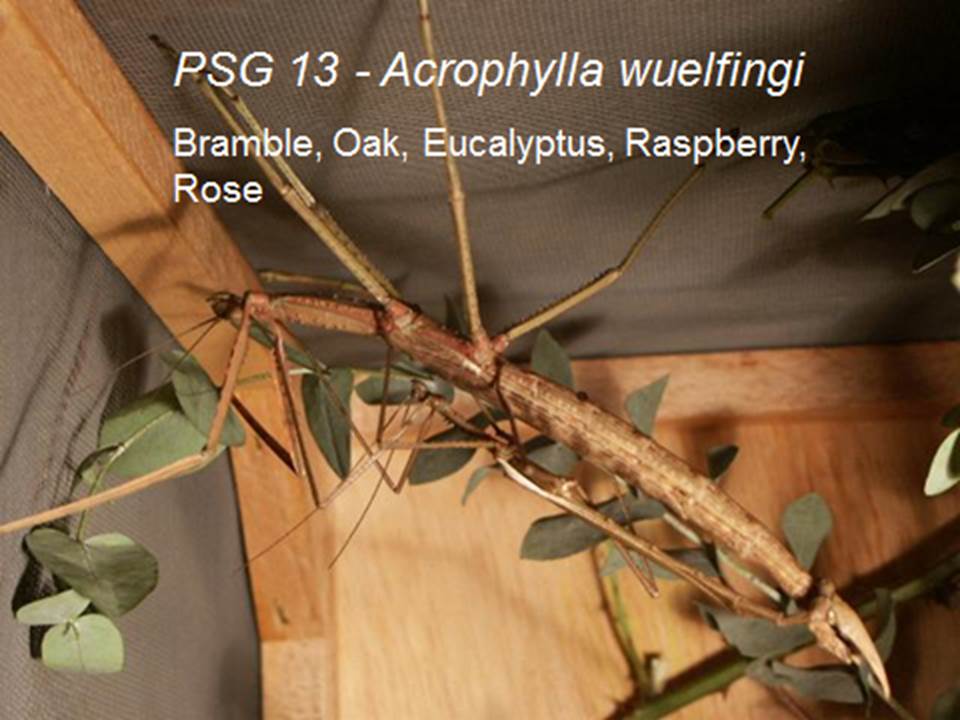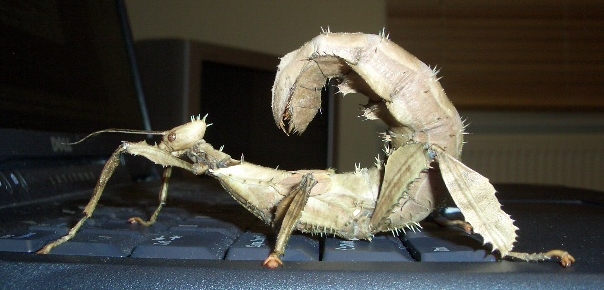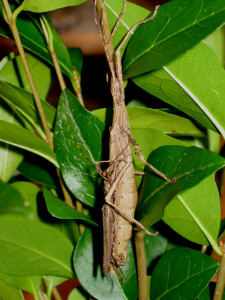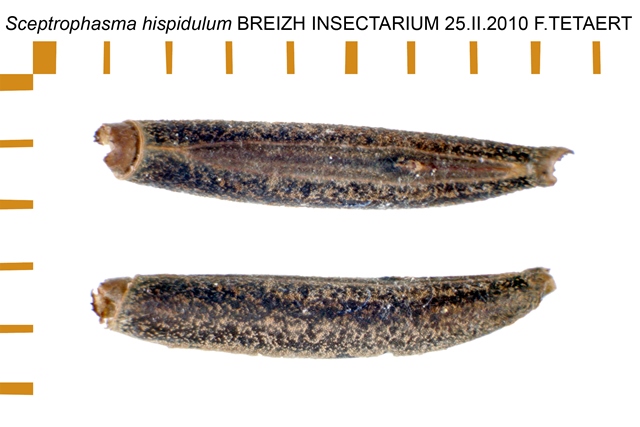The Nuisance of Name Changes and Gender Agreement - Why do we do it?
What's in a name?
For both people and pets (including stick insects) we have males and females, and usually only refer to inanimate objects as 'it' or of neuter gender, i.e. neither male nor female. Similarly, for the scientific names of animals and plants we use words which may be masculine (m.), feminine (f.) or neuter (n.).
Each animal or plant is given a 'couplet' of scientific names:
- the generic name or genus, which is always cited with a capital letter and can be thought of as the equivalent of a person's surname or family name.
- the specific name or species, which is always cited in lowercase and can be thought of as a person's given name.
There may be several species of different names included in each genus, similar to how members of a human's family share a common family name. This indicates their close relationship to each other.
Gender agreement
Scientific names are often of Greek (G.) or Latin (L.) origin or, if from any other language, are usually Latinised (i.e. given Latin endings).
 |
For many generic names, the gender of the name is made clear by the ending:
- names ending in -us are usually masculine (m.), e.g. Carausius
- names ending in -a are usually feminine (f.), e.g. Acrophylla
- names ending -um are usually neuter (n.), e.g. Baculum
Note: this does not indicate the gender of the insect, merely whether the name is masculine, feminine or neuter in its originating language (similar to how German, French, Spanish, etc. words can also have different endings depending on their gender).
If a generic name is formed from two or more words, as in Acro- (G. n.) and -phylla (G. f.), it is always the gender of the last word which is taken. So, Acrophylla is feminine because -phylla is feminine.
Exceptions to the "Gender agreement" rule
A minor complication in this process of names having gender agreement, is that sometimes generic names ending in -a may not be feminine, for example, in the cricket genus Acheta you might assume this is feminine due to the -a ending, but in fact it is actually masculine (meaning a male cicada!), and Acheta domesticus (Linnaeus) is the correct scientific name (with correct masculine endings) of the house-cricket.
 |
Also, the stick insect genus Bactrododema has an -a ending but is actually neuter, being derived from 'bactron' (a stick or rod (G.)) and 'demas' (the living body (G.)). Both words are of neuter gender, hence you get an -um ending, e.g. Bactrododema tiaratum (Stål).
FUN FACT: The adjectival name tiaratum is derived from the noun 'tiara' (G. f.) and is also used in the name Extatosoma tiaratum. Since 'soma' means body (G. n.), the name Extatosoma tiaratum translates literally as 'the ecstatic-bodied tiara'!
Adjectival names
One of the (many!) rules of the International Code of Zoological Nomenclature ('the Code') is that if the specific name is an adjective (i.e. a descriptive word), it must agree in gender with that of the generic name. This can appear confusing, because the name meaning 'spiny' may be spelled: spinosus (m.), spinosa (f.) or spinosum (n.), depending on the gender of the generic name. E.g. Carausius spinosus - since Carausius is masculine, 'spin' must also take a masculine ending ('us').
In human terms, there are also similar masculine/feminine rules for names of people, e.g. Frances is a female version and Francis is a male version of the same name.
Non-adjectival names
Specific names which are not adjectival do not change gender, e.g. Lonchodes harmani (named after Allan Harman) and Hoploclonia abercrombiei (named after Ian Abercrombie). The -i ending is masculine, though if either Allan or Ian were women the names would have taken feminine endings and would have been L. harmanae and H. abercrombieae instead!
 |
Names which are nouns
Specific names which are nouns do not change in gender to agree with the genus. For example, Malacomorpha cyllarus was described as Necroscia cyllarus, and both Necroscia and Malacomorpha are feminine, but the name 'cyllarus' is the generic name of a bug, which presumably Westwood considered the stick insect resembled.
This may all seem strange and unnecessary, especially when it is difficult to work out the original meaning of the word and hence its gender, so it is very helpful when an author explains the etymology of each name, i.e. how and why it has been derived.
What if different species have been given identical names?
One of the rules of the Code is that all names must be different, i.e. within each genus all species must have a different name, so if by chance two different species have been given an identical name the younger name or 'junior homonym' must be replaced. In human terms, having two brothers with the same surname and both called 'John' would be very confusing!
There is a similar Code and set of rules for the Plant Kingdom and an identical name may be used for both an animal and a plant, e.g. Bacteria is both a genus of rod-shaped stick insects and is also the name of a group of rod-shaped microscopic members of the Plant Kingdom.
Of course we don't always get it right the first time and often we have discussions about interpretation, e.g. 'just what exactly did Westwood mean in 1859, and could he have got it wrong to start with?' - but that's all part of the fun!
Referencing authors in scientific names
When referencing the full scientific name, the surname of the author (the original describer) of the species, must follow the species name, for example Phyllium bioculatum Gray.
 |
When moving genus
A species may be moved from one genus to another, in which case the author's name is placed in parentheses (round brackets) to show a change has been made, as in Acheta domesticus (Linnaeus). however, because of the gender-agreement rule for adjectival specific names, if the genus is changed from a genus of gender to a genus of a different gender, the adjectival specific name will change its ending to match. One such example is Sceptrophasma hispidula (Wood-Mason) which was originally described as Bacillus hispidulus Wood-Mason.
